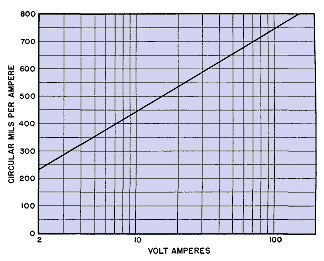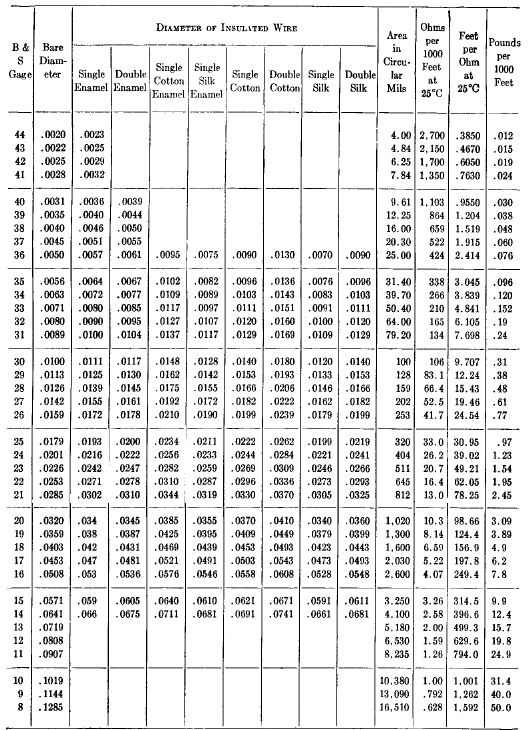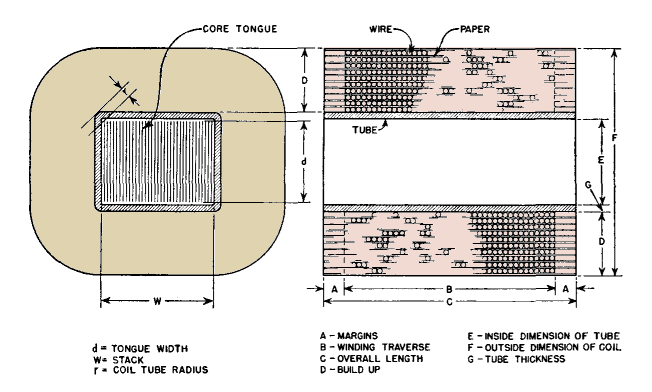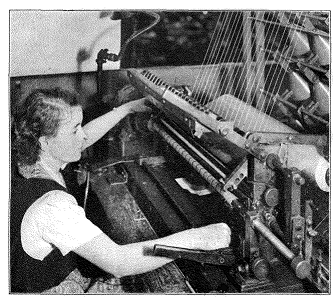| Electronic Transformers and Circuits is a free introductory textbook on transformers and related circuits. See the editorial for more information.... |

|

Home  Transformer Construction, Materials, and Ratings Transformer Construction, Materials, and Ratings  Windings Windings |
|||||||||||||||||||






|
|||||||||||||||||||
Windings
Space occupied by the wire depends on the wire insulation as well as on the copper section. This is especially noticeable in small wire sizes. Table IV gives the bare and insulation diameters for several common kinds of wire and Table V the turns per square inch of winding space.
Table IV. Insulated Wire Sizes
Table V. Turns per Square Inch of Insulated Wire
Space usually can be saved by avoiding cotton or silk wire covering, and instead using enameled wire with paper layer insulation as in Fig. 32.
Thickness of layer paper may be governed by layer voltage; it is good practice to use 50 volts per mil of paper. In coils where layer voltage is low, the paper thickness is determined by the mechanical strength necessary to produce even layers and a tightly wound coil. Table VI gives the minimum paper thickness based on this consideration. Space factor may refer to linear spacing as across a layer, or to the total coil section area. It is more convenient to use linear space factor in designing layer-wound coils and area space factor in random-wound coils. The values in each case depend largely on the method of winding. For example, it is possible to wind No. 30 enameled wire with 97 per cent linear space factor by hand, but with only 89 per cent on an automatic multiple-coil winding machine. (See Fig. 33.)
Moreover, values of space factor vary from plant to plant. An average for multiple-coil machines is given in Table VI.
Table VI. Paper-Insulated Coil Data
|
|||||||||||||||||||
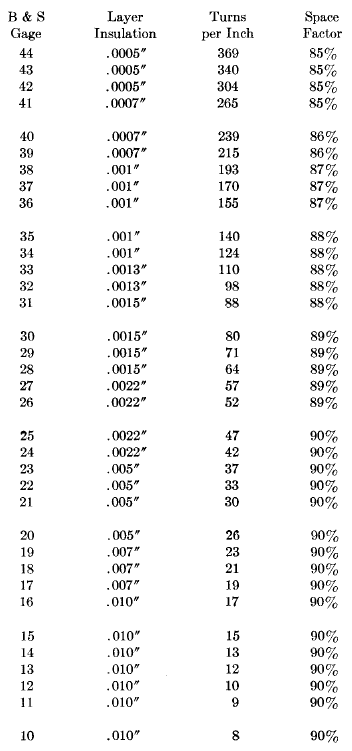 |
Mean length of turn must be calculated for a coil in order to find its resistance in ohms. This may be found by referring to the side view of Fig. 32. Note that there is a small clearance space between core and coil form or tube. Let d be the core tongue and w the stack. Suppose there are several concentric windings. The length of mean turn of a winding V at distance r from the core and having height D, is
 |
[26] |
where ΣD is the sum of all winding heights and insulation thicknesses between winding V and the core.
The mean turn of the winding U just below V ordinarily is calculated before that of winding V. This fact simplifies the calculation of winding V, the mean turn of which is
 |
[27] |
where c is the thickness of insulation between U and V.
Allowance must be made, with many coil leads, for bulging of the coil at the ends and consequent increase of mean turn length.
The placement, insulation, and soldering of leads constitute perhaps the most important steps in the manufacture of a coil. When coils are wound one at a time, the leads can be placed in the coil while it is being wound. The start lead may be placed on the coil form, suitable insulation may be placed over it, and coil turns may be wound over the insulation. Tap leads can be arranged in the same way. Finish leads must be anchored by means of tape, string, or yarn, because there are no turns of wire to wind over them. Typical lead anchoring is shown in Fig. 34.
 |
| Fig. 34. Start-lead insulation in hand-wound coils. |
In multiple-wound coils, the leads must be attached after the coils are wound. Extra wire on the start turn is pulled out of the coil and run up the side as shown in Fig. 35, with separator insulation between wire extension and coil.
 |
| Fig. 35. Start-lead insulation in multiple-wound coils. |
Outer insulation covers the wire extension up to the lead joint. A pad of insulation is placed under the joint, and one or more layers of insulation, which insulate and anchor the joint, are wound over the entire coil and the lead insulation. Electrical-grade scotch tape is widely used for anchoring leads. It is important to avoid corrosive adhesives.
Leads should be large enough to introduce only a small amount of voltage drop and should have insulation clearances adequate for the test voltage. These clearances can be found as explained in Section 19.
In high-voltage transformers it would often be possible to seal the windings if there were no leads; hence lead placement calls for much care and skill. Leads and joints should also be mechanically strong enough to withstand winding, impregnating, and handling stresses without breakage.
 Transformer Construction, Materials, and Ratings
Transformer Construction, Materials, and Ratings  Windings
Windings
Last Update: 2011-01-24


